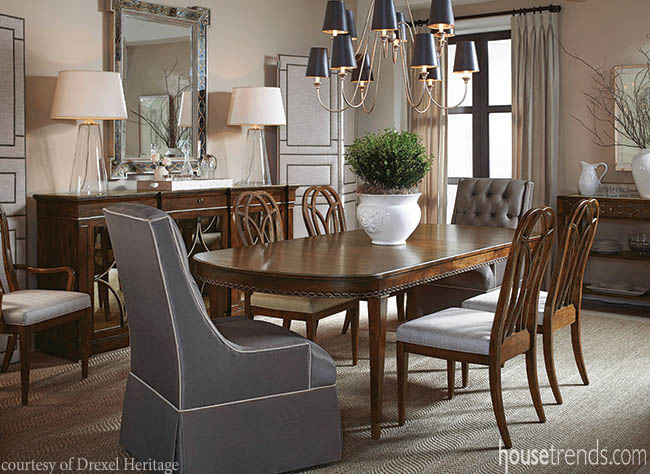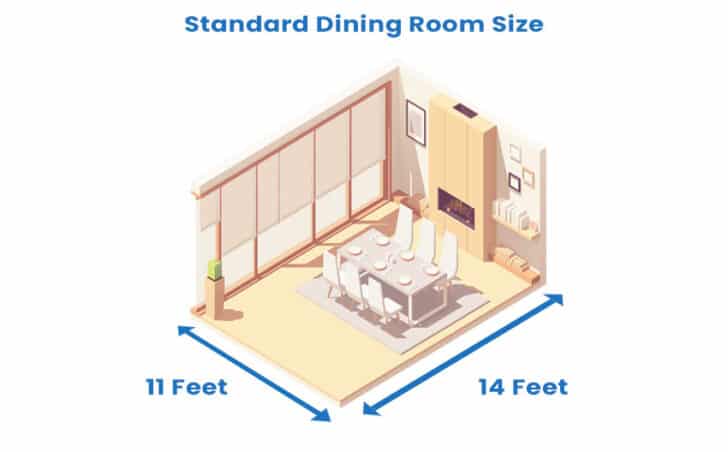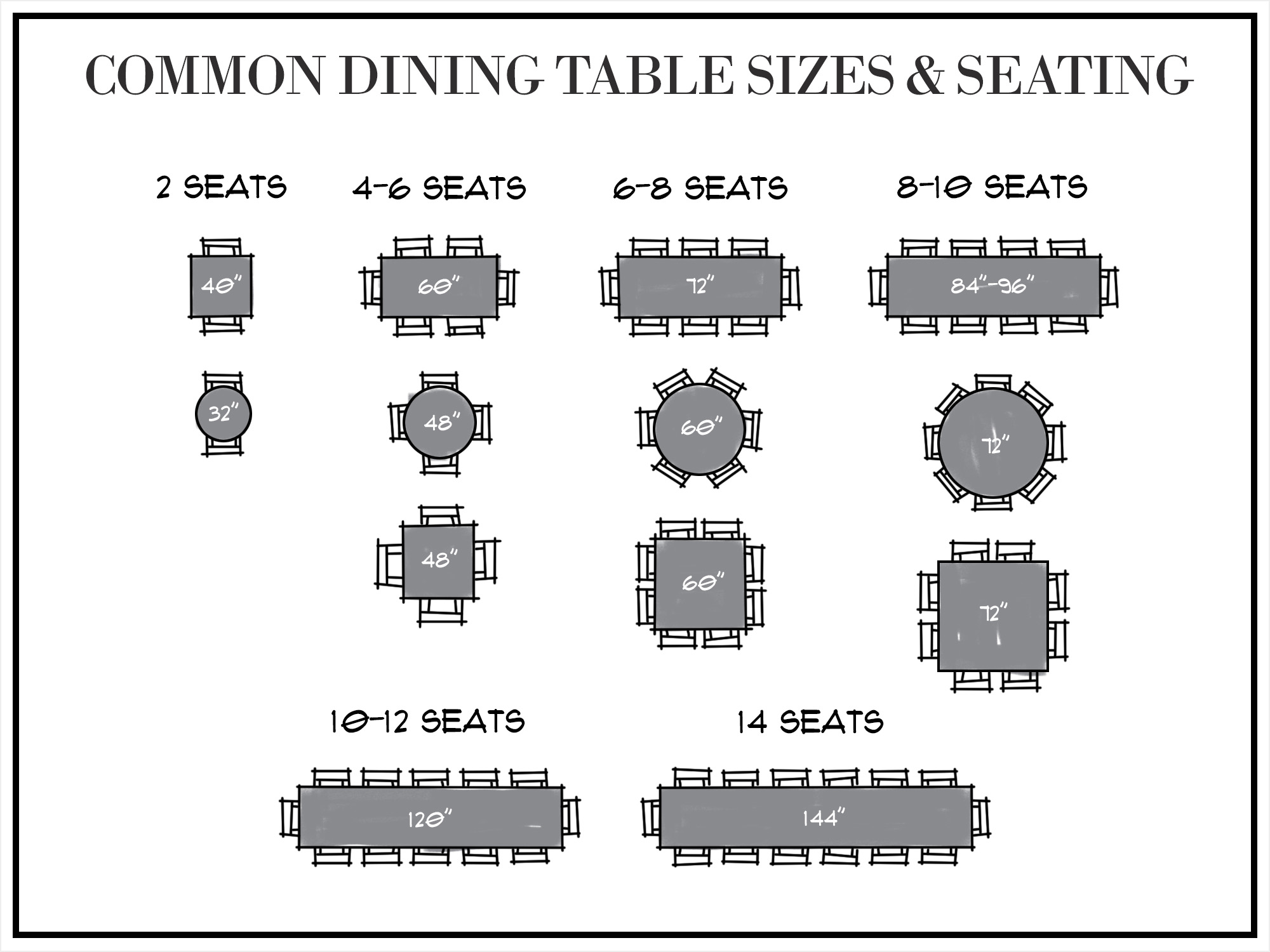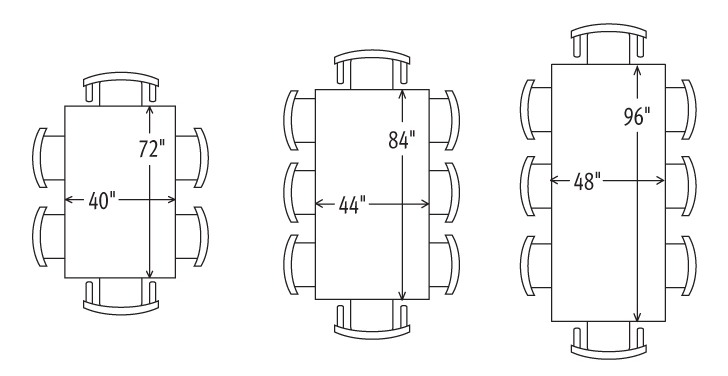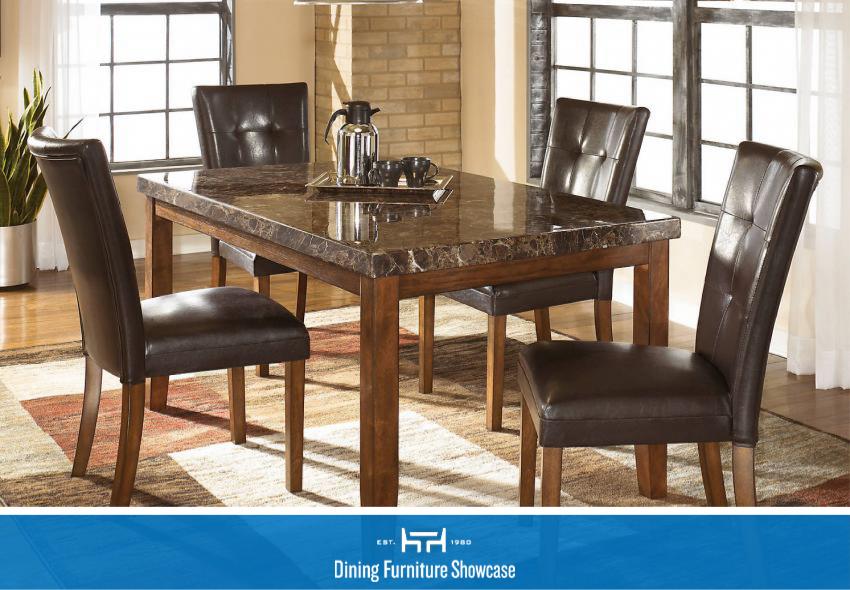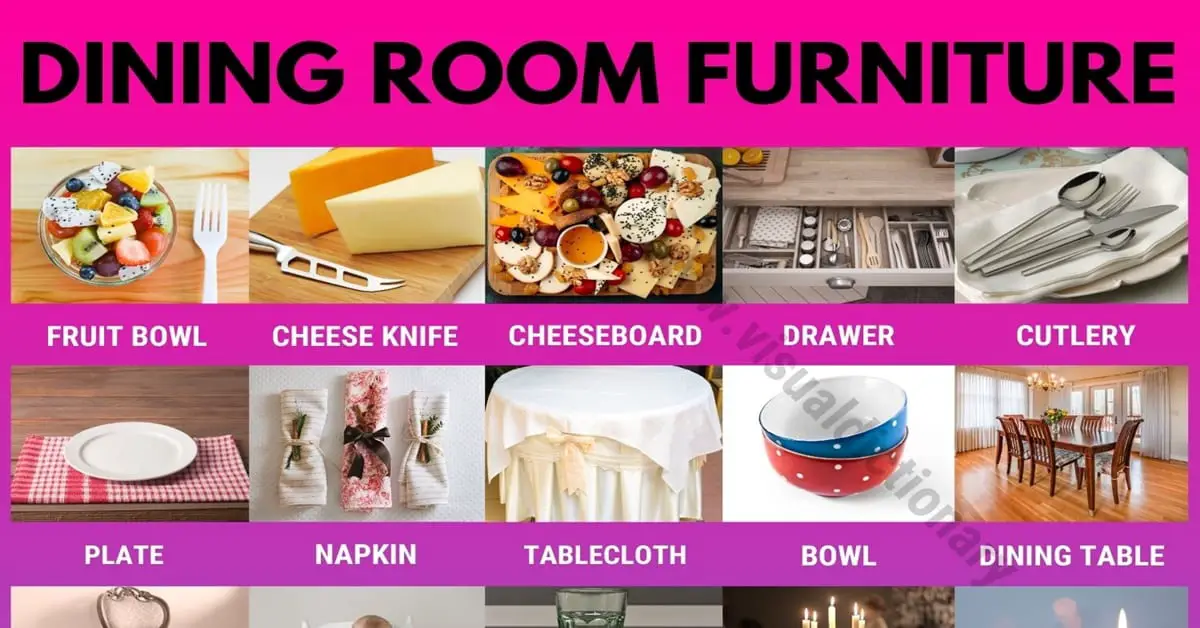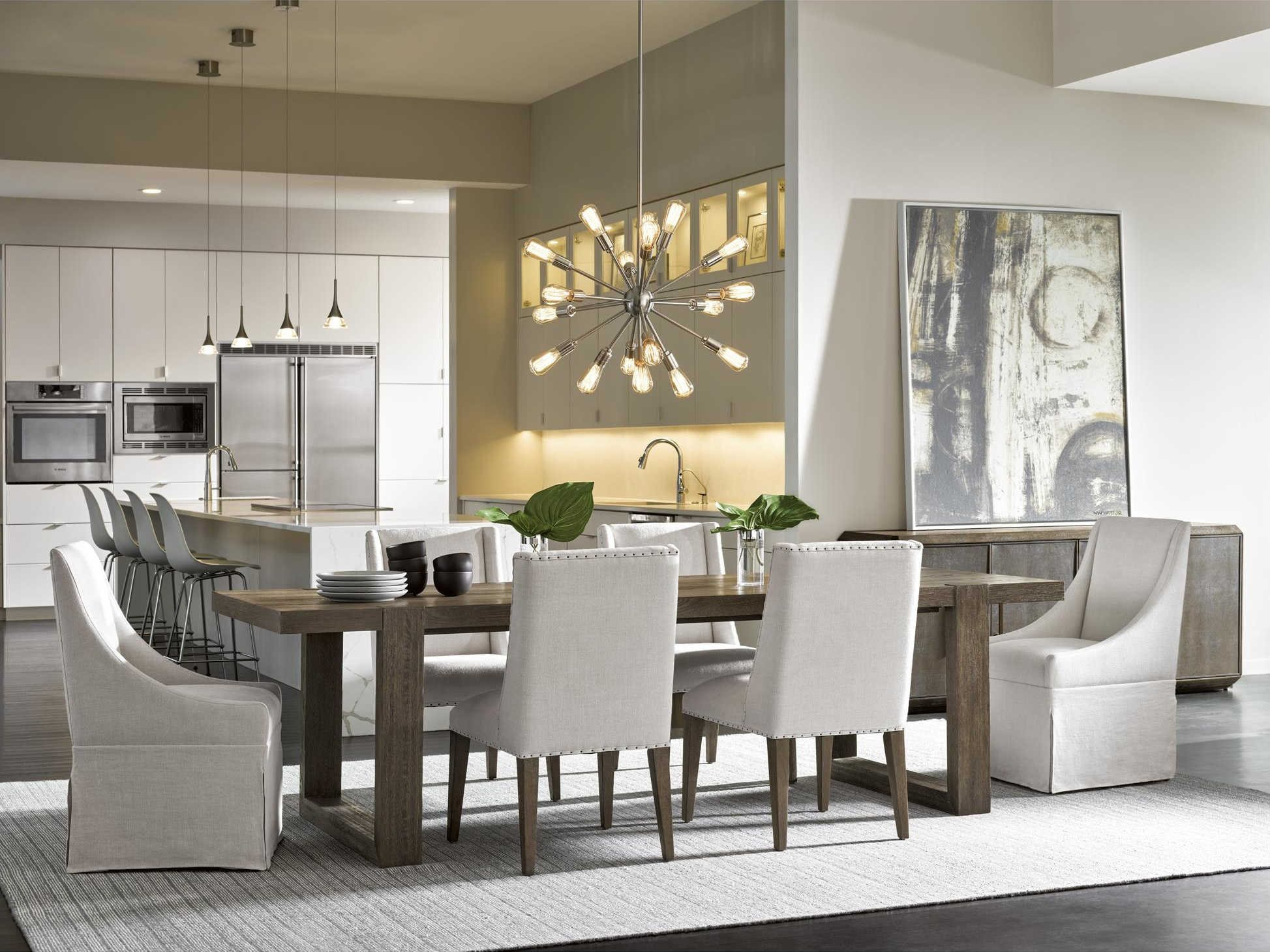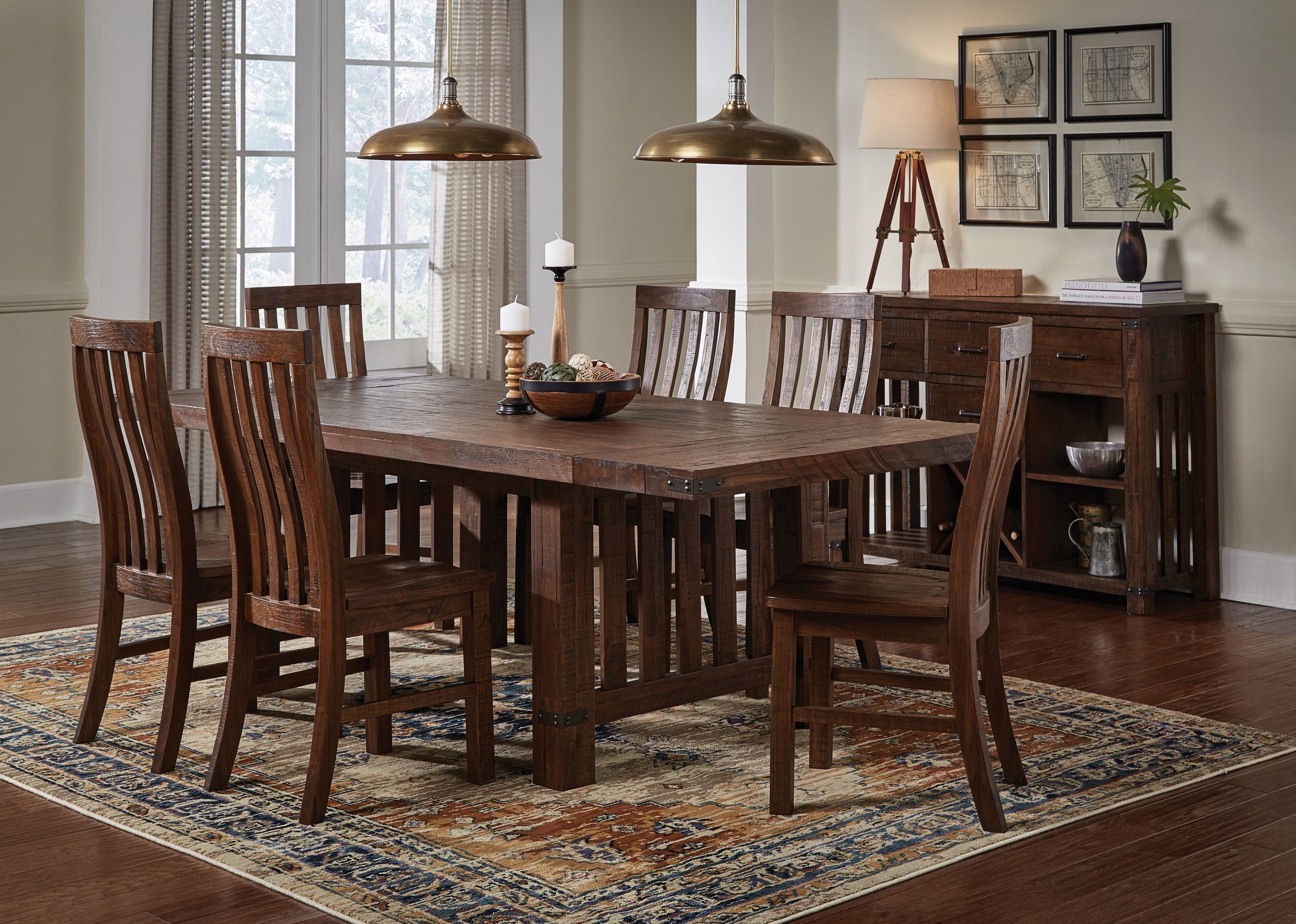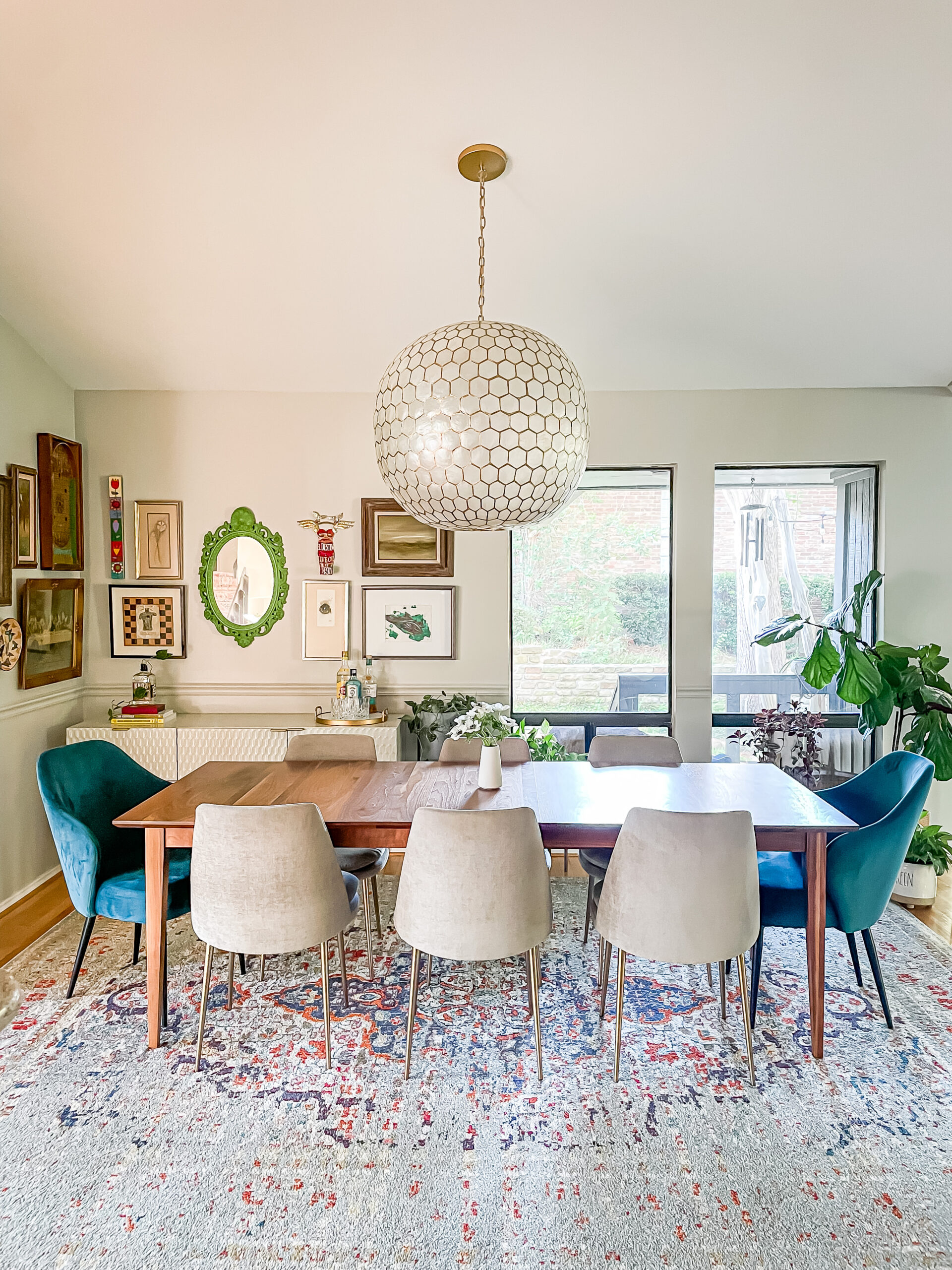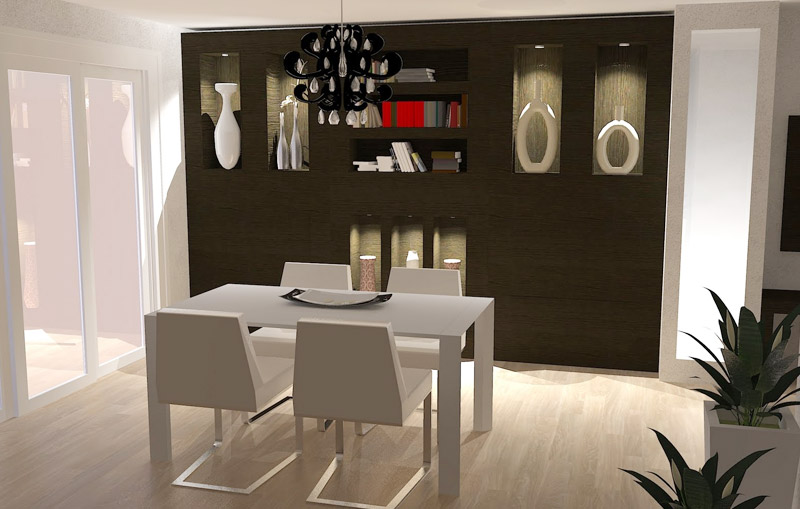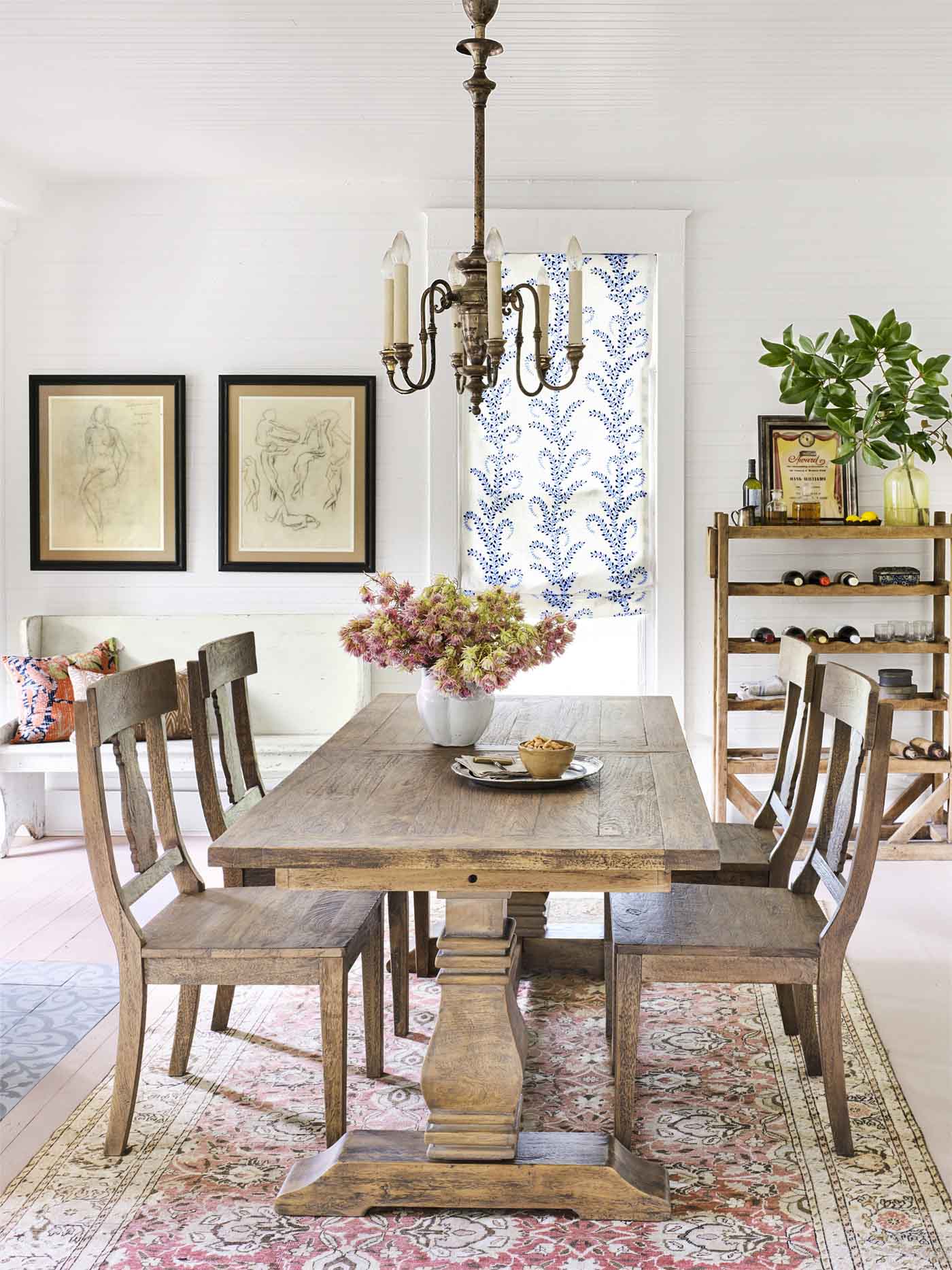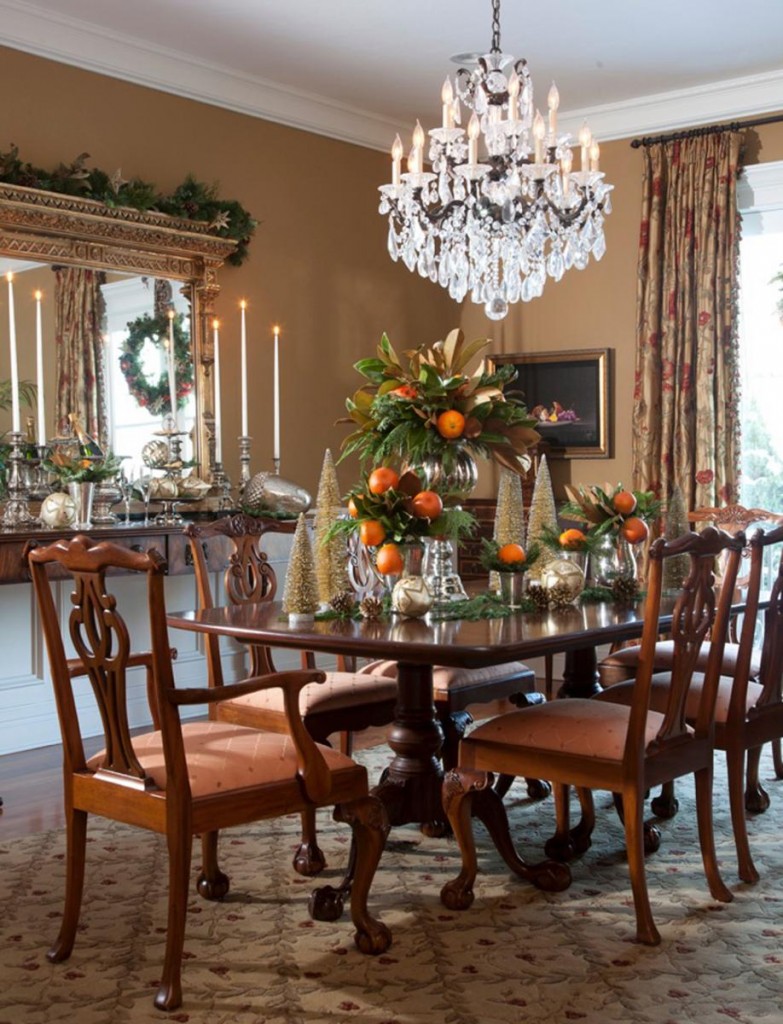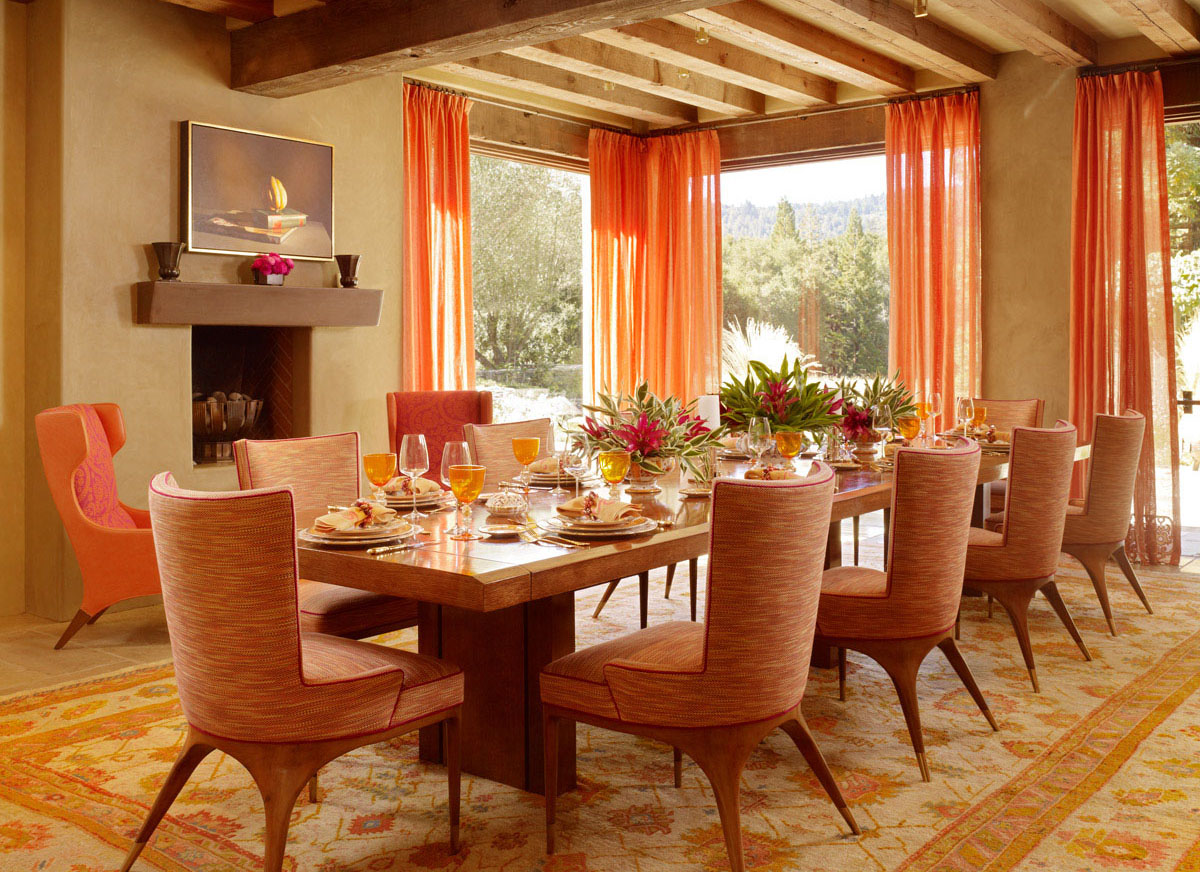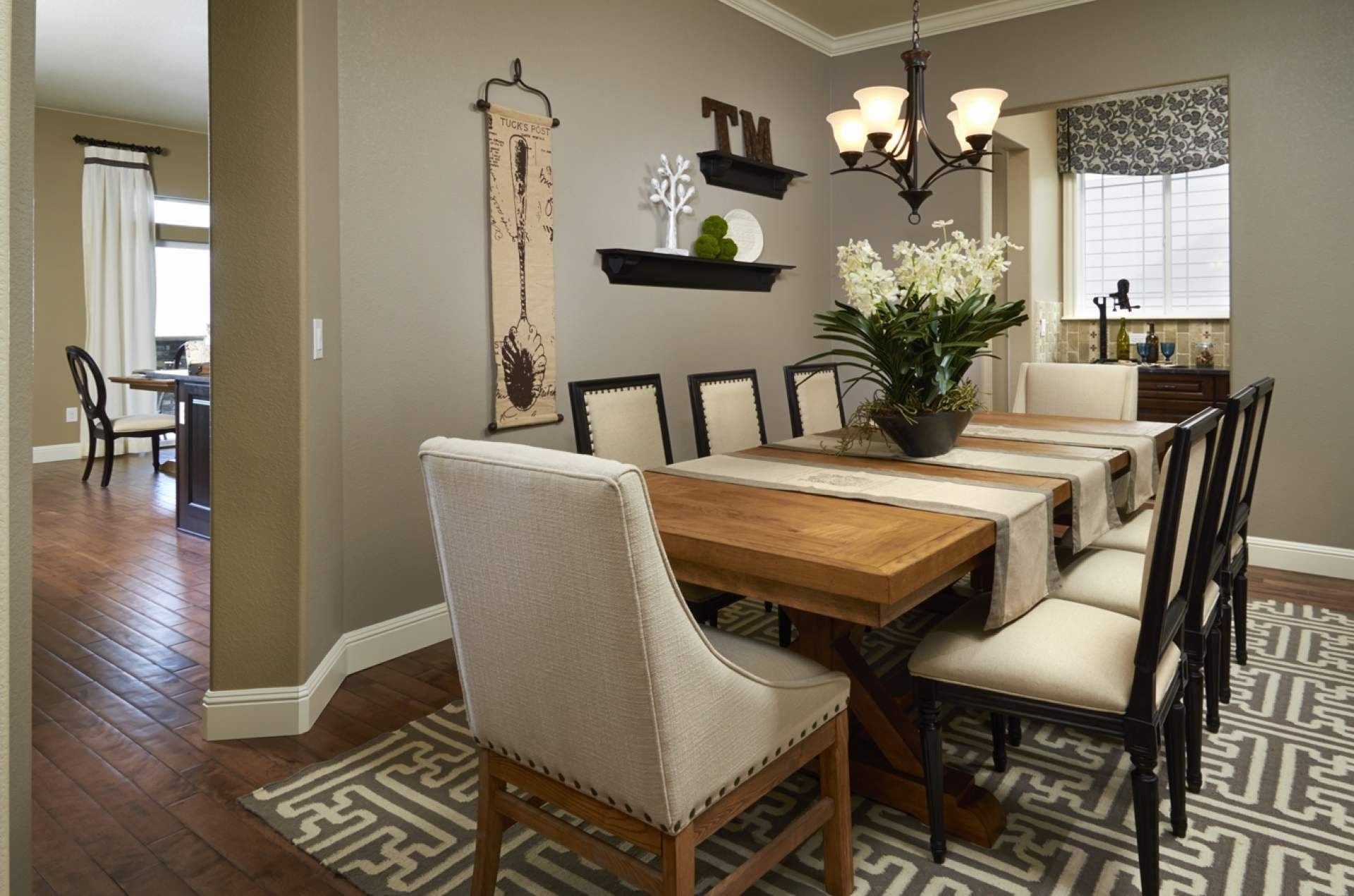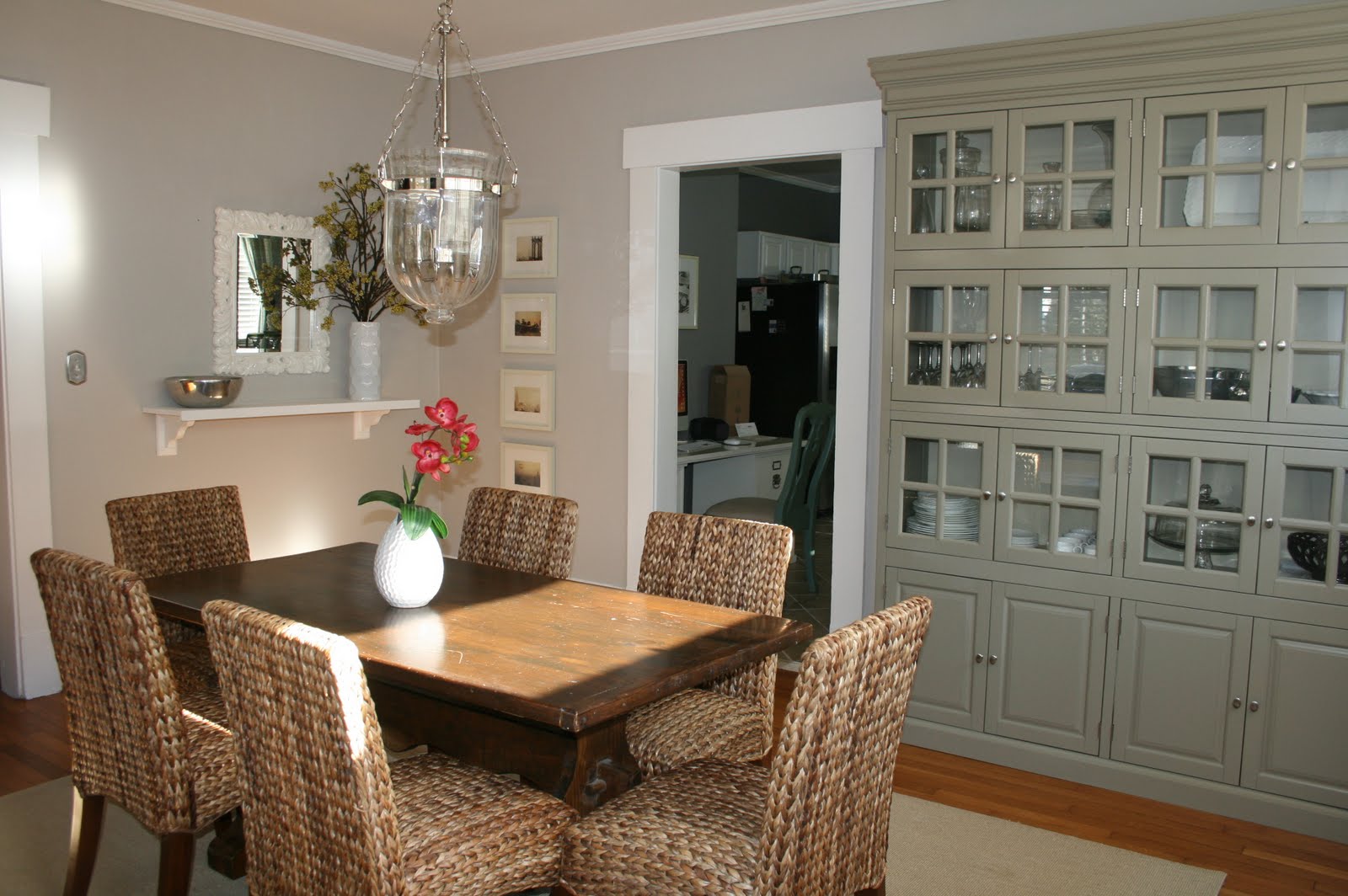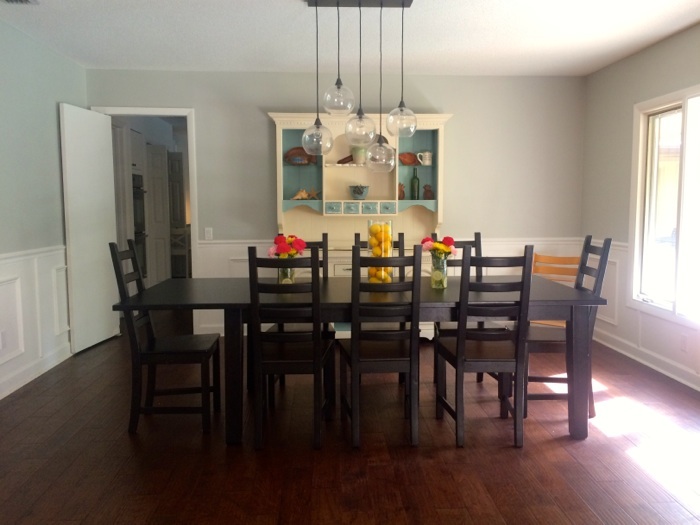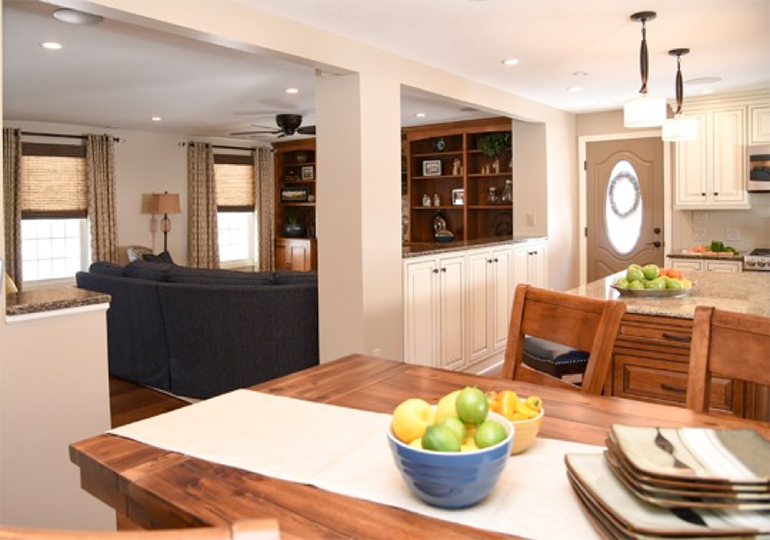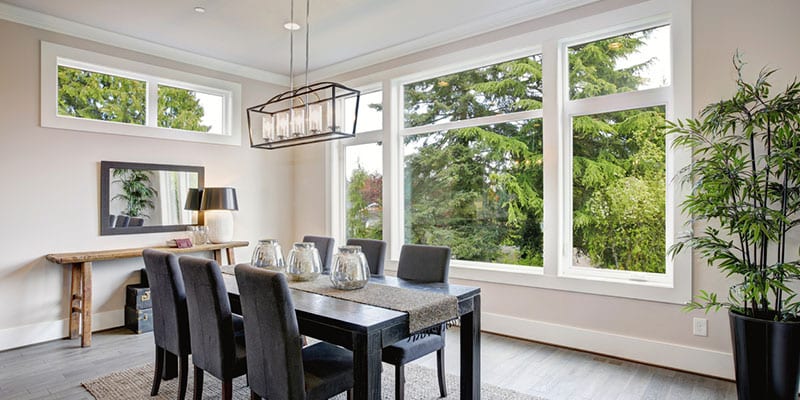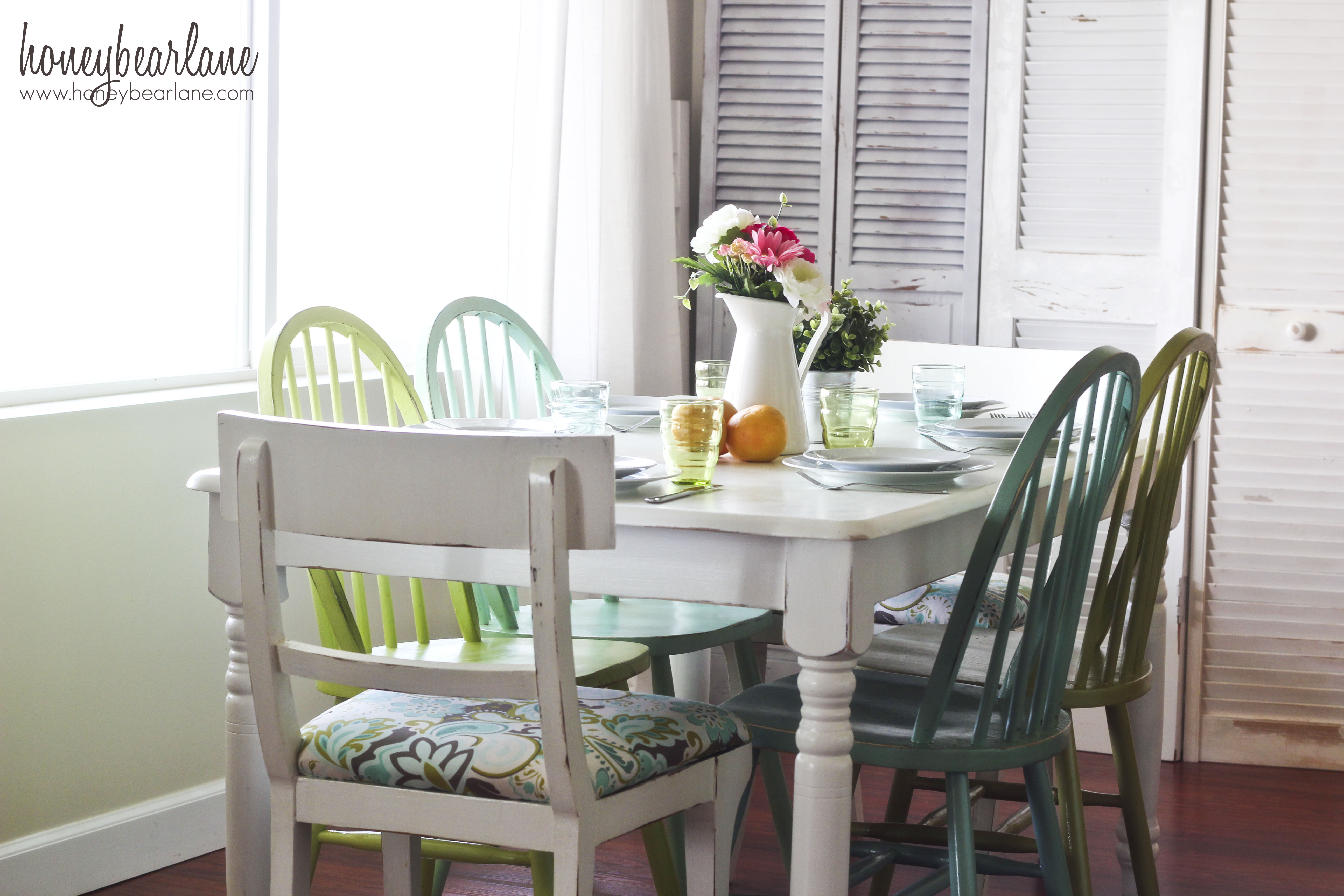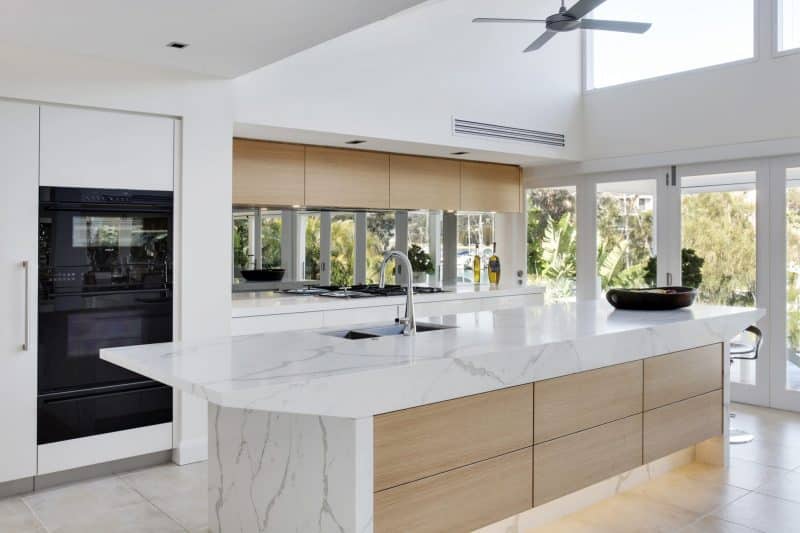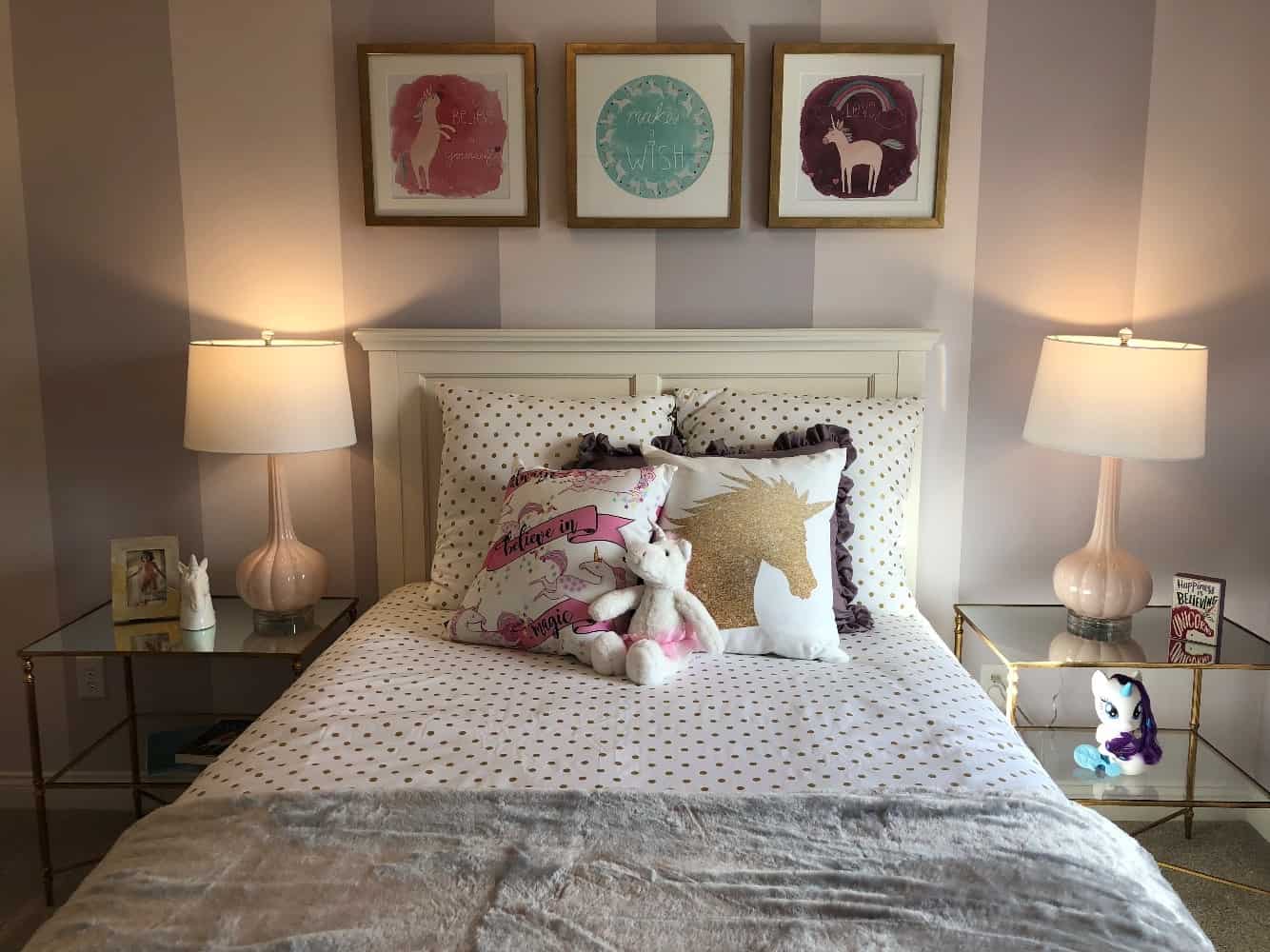A dining room is a central gathering space in any home, where family and friends come together to share meals and create memories. However, designing and furnishing a dining room can be a daunting task, especially when it comes to determining the right dimensions and layout. To help you create the perfect dining room, we have compiled a list of the top 10 dining room dimension guides. From standard dimensions to design tips, we have got you covered. Let's dive in! Dining Room Dimension Guides
The first step in designing a dining room is determining the right size for your space. The size of your dining room will depend on various factors, such as the number of people you plan to accommodate, the shape of the room, and the overall layout of your home. As a general rule, allow at least 36 inches of table space per person. This will ensure that everyone has enough elbow room and can move around comfortably. Additionally, the dining room should be at least 10 feet by 10 feet to accommodate a standard-sized dining table and chairs. Dining Room Size Guide
The layout of your dining room will also play a crucial role in determining the dimensions. If you have a square-shaped room, a round or square dining table would be the best option. On the other hand, if your dining room is rectangular, a rectangular or oval dining table would be more suitable. It is essential to leave enough space to move around the table comfortably, so consider leaving at least 36 inches of clearance between the table and walls or other furniture. Dining Room Layout Guide
When measuring your dining room, always keep in mind the flow and function of the space. Take into account the location of windows, doors, and other structural elements that could affect the placement of your dining table. If possible, create a floor plan before purchasing furniture to ensure that everything will fit comfortably. Dining Room Measurement Tips
While the size of your dining room may vary, there are some standard dimensions that you can refer to when planning your space. For a rectangular dining table, the standard width is 36 inches, and the length can range from 60 inches for six people to 96 inches for ten people. For a round table, the standard diameter is 48 inches, which can comfortably seat four people. Standard Dining Room Dimensions
In addition to the dining table, you will also need to consider the size of other furniture pieces, such as chairs, buffets, and cabinets. When it comes to chairs, allow at least 24 inches of space between each chair to ensure that everyone has enough room to sit comfortably. As for buffets and cabinets, make sure they are not too wide or deep to obstruct movement in the dining room. Dining Room Furniture Sizing
When designing your dining room, there are a few guidelines that you should follow to create a functional and visually appealing space. Firstly, make sure there is enough lighting, either through natural light or artificial lighting, to create a warm and inviting atmosphere. Secondly, consider the style and color scheme of your dining room and choose furniture and decor that complements it. Finally, add personal touches, such as artwork and family photos, to make the space feel more intimate and welcoming. Dining Room Design Guidelines
Space planning is crucial for any room, and the dining room is no exception. Before purchasing furniture, consider the flow of movement in the room and how different pieces will fit together. For example, make sure there is enough space between the dining table and other furniture to allow people to move around freely. Additionally, consider using multi-functional furniture, such as benches with storage, to maximize space in smaller dining rooms. Dining Room Space Planning
Once you have determined the dimensions and layout of your dining room, it's time to think about decor. The dining room is the perfect space to showcase your personal style and add some personality to your home. Consider adding a statement light fixture above the dining table, using a bold rug to add color and texture, or incorporating a feature wall with wallpaper or a gallery of artwork. Dining Room Decorating Ideas
If you are planning a dining room renovation, it is essential to consider the dimensions and layout before making any changes. Keep in mind that moving structural elements, such as windows and doors, can be costly and affect the overall flow of the room. Additionally, consider the functionality of your dining room and how you can improve it through the renovation process. Whether it's adding built-in storage or creating a more open concept, make sure to plan carefully to achieve the perfect dining room for your home. Dining Room Renovation Tips
The Importance of Proper Dining Room Dimensions

Creating a Functional and Comfortable Space
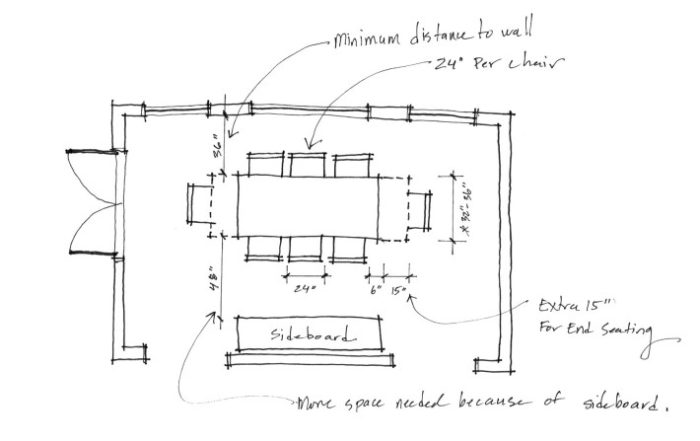 When it comes to designing a house, one of the most important factors to consider is the dimensions of the dining room. A dining room is not just a place to eat, but also a space for gathering and entertaining guests. Therefore, it is crucial to have proper dimensions to ensure a functional and comfortable dining room.
Proper dimensions
refer to the size and layout of the dining room, including the length, width, and height. These dimensions can greatly impact the overall design and functionality of the space. For instance, a dining room that is too small can feel cramped and uncomfortable, while a dining room that is too large can feel empty and uninviting.
When it comes to designing a house, one of the most important factors to consider is the dimensions of the dining room. A dining room is not just a place to eat, but also a space for gathering and entertaining guests. Therefore, it is crucial to have proper dimensions to ensure a functional and comfortable dining room.
Proper dimensions
refer to the size and layout of the dining room, including the length, width, and height. These dimensions can greatly impact the overall design and functionality of the space. For instance, a dining room that is too small can feel cramped and uncomfortable, while a dining room that is too large can feel empty and uninviting.
Creating Adequate Space for Movement
 One of the main reasons for considering proper dining room dimensions is to allow for adequate space for movement. A dining room should have enough space for people to move around freely without bumping into furniture or each other. This is especially important during gatherings and parties when there may be more people in the room.
Key measurements
to consider when determining dining room dimensions include the clearance space around the table and chairs. The standard clearance space is about 36 inches, but this may vary depending on the shape and size of the table. It is also important to consider the space needed for chairs to be pulled out comfortably and for people to walk behind them.
One of the main reasons for considering proper dining room dimensions is to allow for adequate space for movement. A dining room should have enough space for people to move around freely without bumping into furniture or each other. This is especially important during gatherings and parties when there may be more people in the room.
Key measurements
to consider when determining dining room dimensions include the clearance space around the table and chairs. The standard clearance space is about 36 inches, but this may vary depending on the shape and size of the table. It is also important to consider the space needed for chairs to be pulled out comfortably and for people to walk behind them.
Creating an Aesthetically Pleasing Design
 Aside from functionality, proper dining room dimensions also contribute to the overall aesthetics of the space. A well-proportioned dining room can enhance the visual appeal of the room and make it more inviting. This is particularly important for those who enjoy hosting dinner parties and want to create a welcoming atmosphere for their guests.
Proper proportions
can be achieved by balancing the size of the dining room with the size of the furniture. For instance, a large dining room would look best with a larger dining table and chairs, while a smaller dining room may benefit from a round or oval table to make the space feel more open.
Aside from functionality, proper dining room dimensions also contribute to the overall aesthetics of the space. A well-proportioned dining room can enhance the visual appeal of the room and make it more inviting. This is particularly important for those who enjoy hosting dinner parties and want to create a welcoming atmosphere for their guests.
Proper proportions
can be achieved by balancing the size of the dining room with the size of the furniture. For instance, a large dining room would look best with a larger dining table and chairs, while a smaller dining room may benefit from a round or oval table to make the space feel more open.
In Conclusion
 In conclusion, proper dining room dimensions are essential for creating a functional, comfortable, and aesthetically pleasing space. When designing a dining room, it is important to carefully consider the size and layout to ensure that it meets the needs of the household and reflects their personal style. By following
guidelines for proper dimensions
, you can create a dining room that is not only practical but also visually appealing.
In conclusion, proper dining room dimensions are essential for creating a functional, comfortable, and aesthetically pleasing space. When designing a dining room, it is important to carefully consider the size and layout to ensure that it meets the needs of the household and reflects their personal style. By following
guidelines for proper dimensions
, you can create a dining room that is not only practical but also visually appealing.
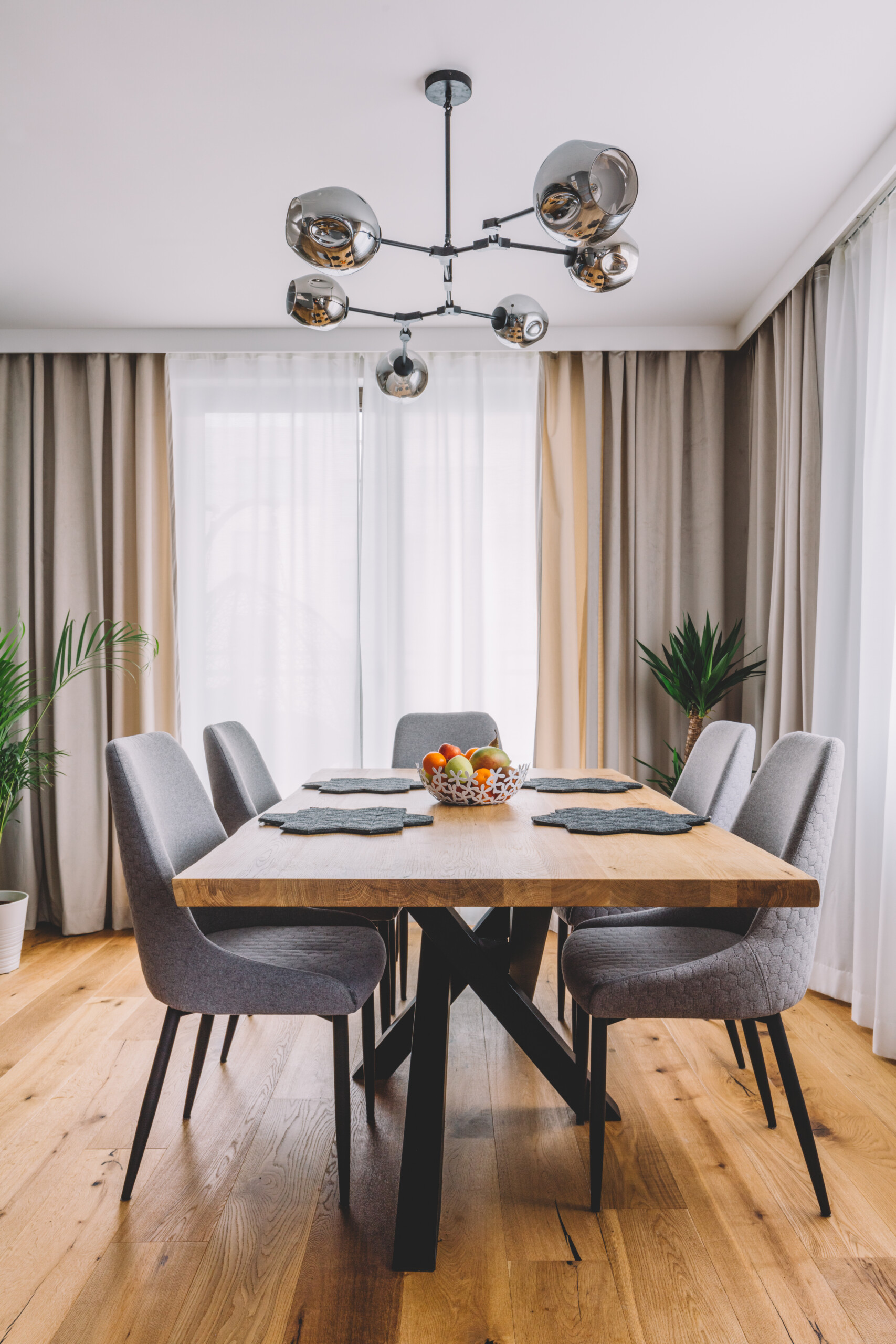









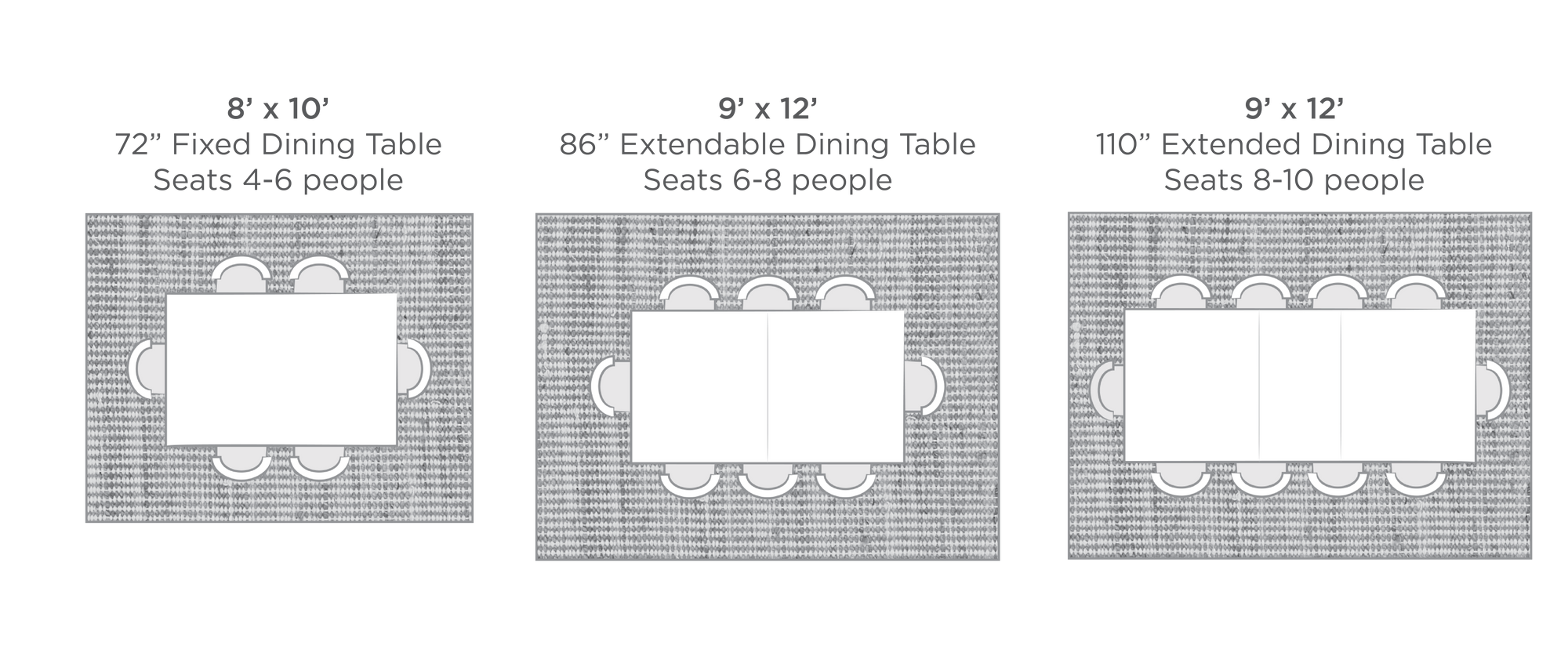


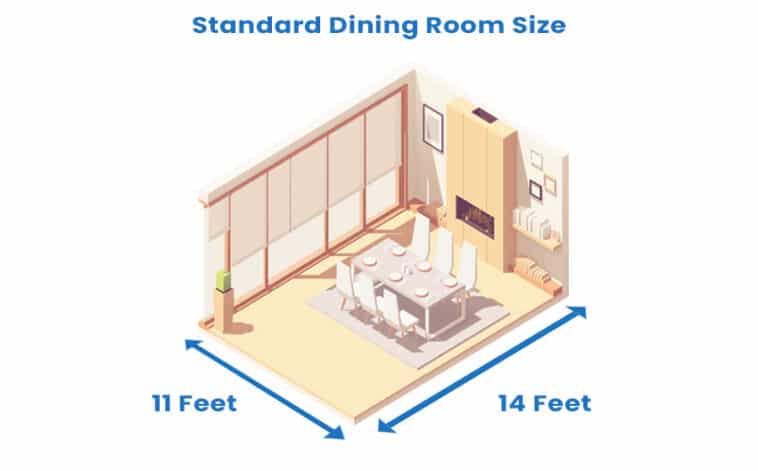








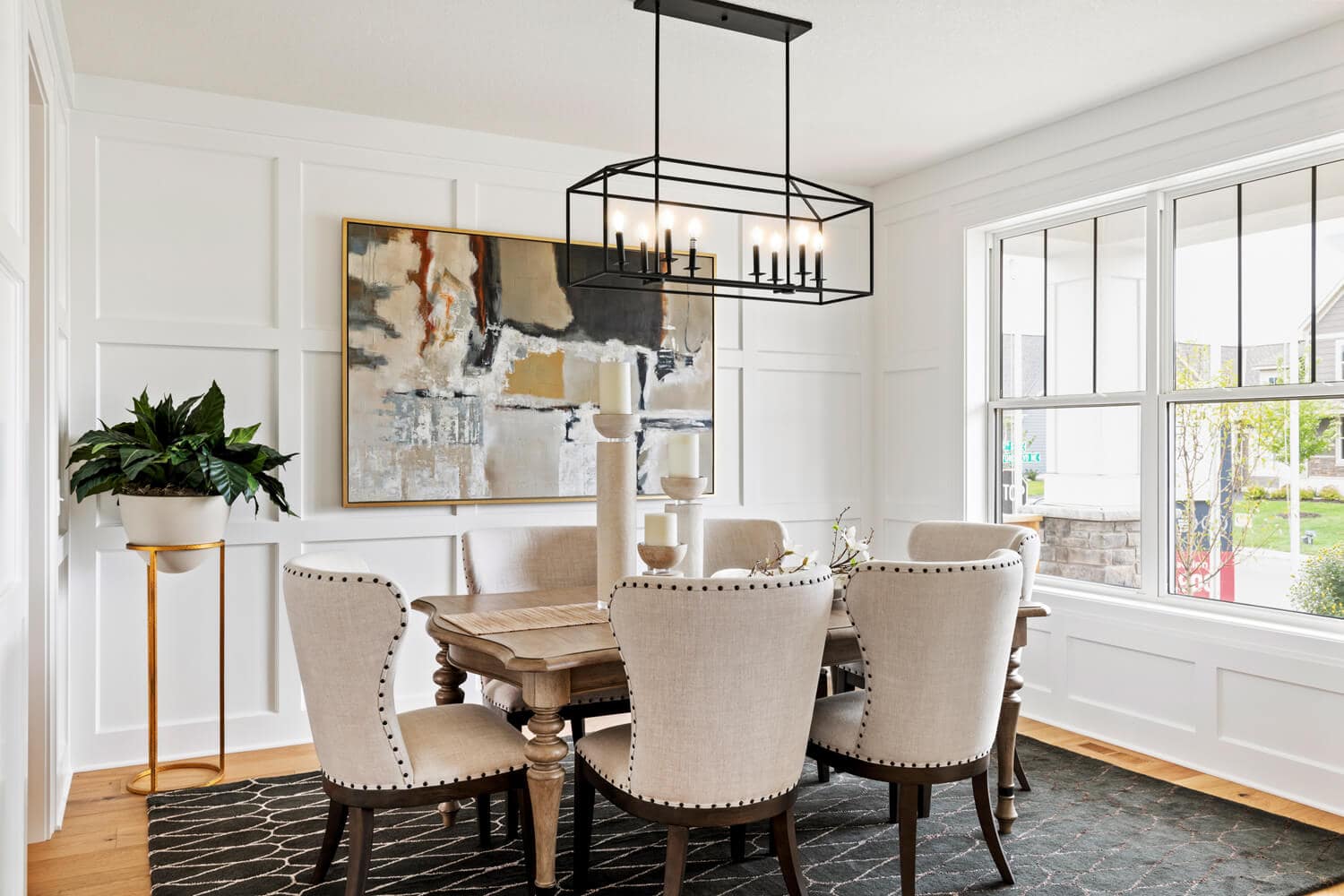
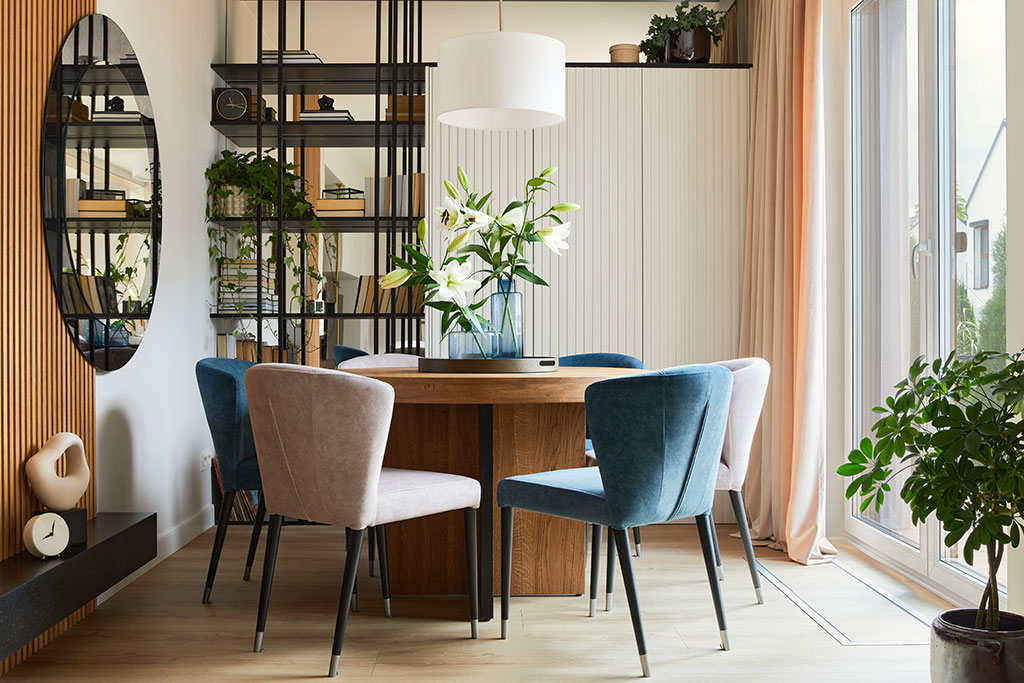
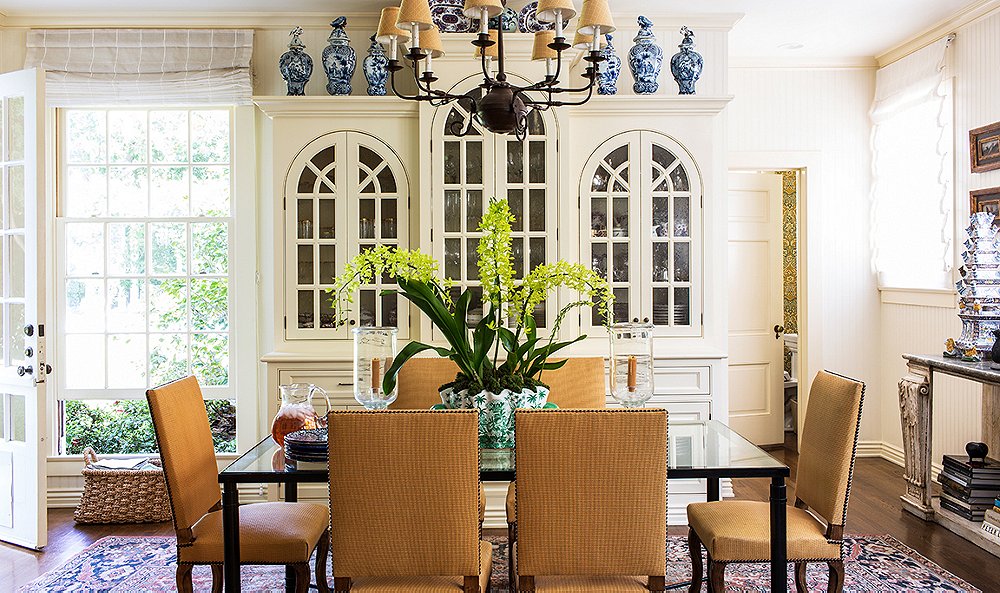
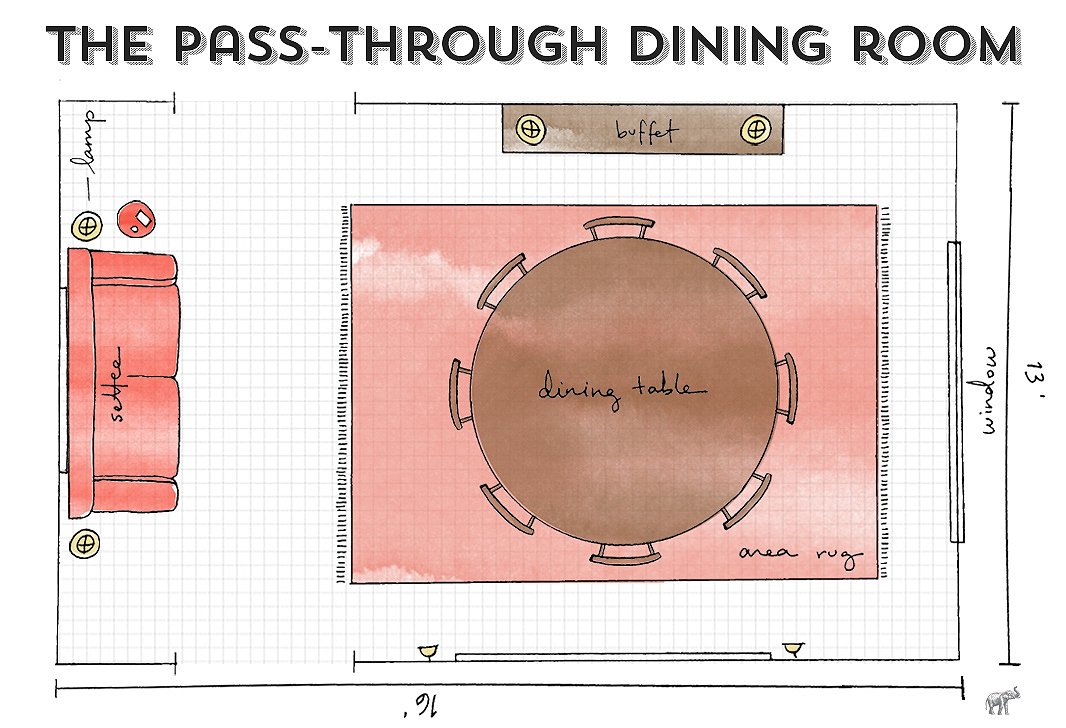
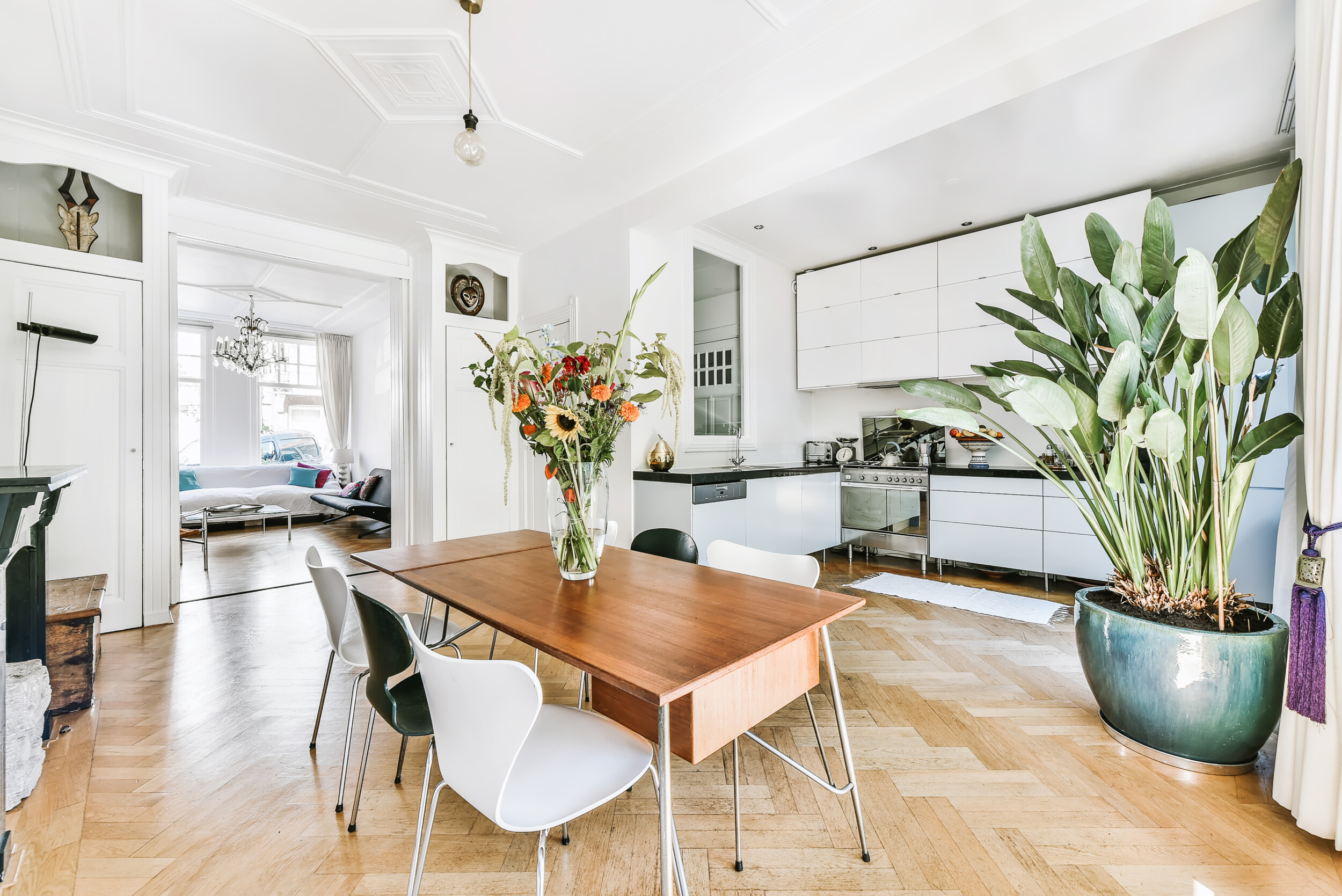





:max_bytes(150000):strip_icc()/standard-measurements-for-dining-table-1391316-FINAL-5bd9c9b84cedfd00266fe387.png)
